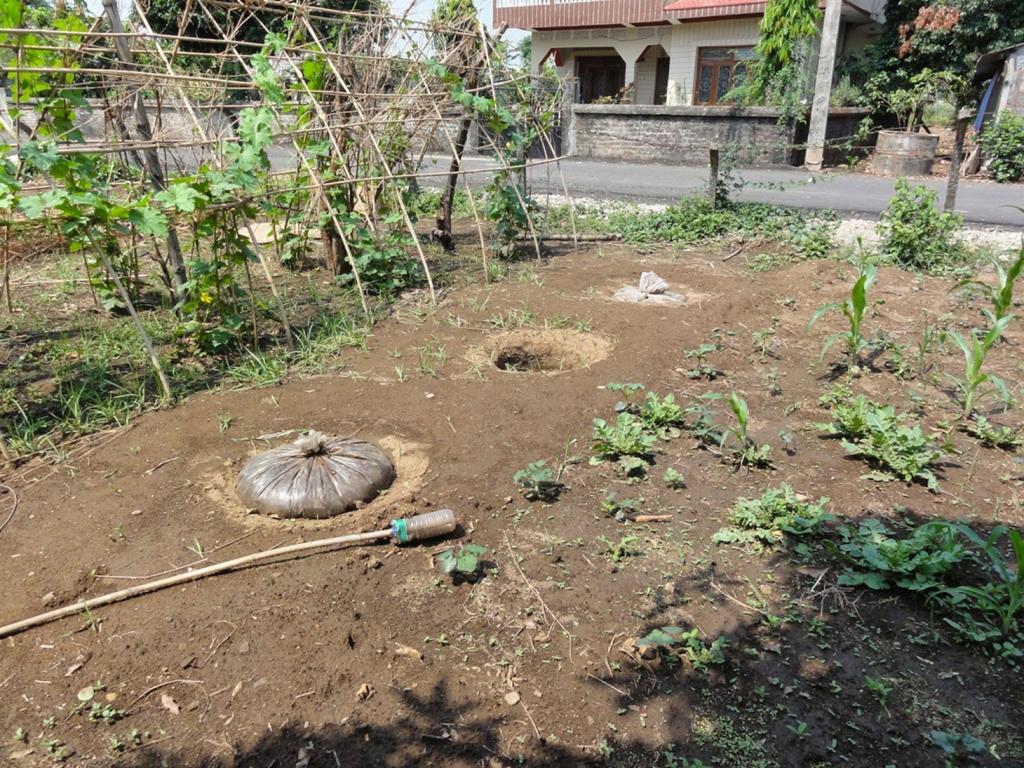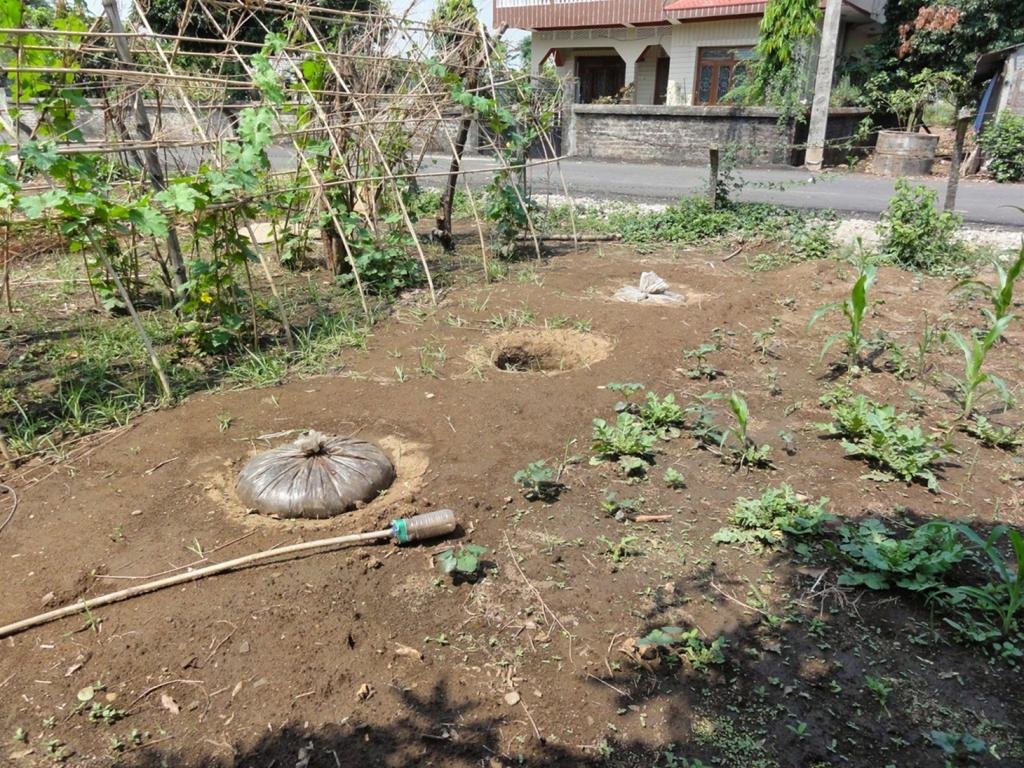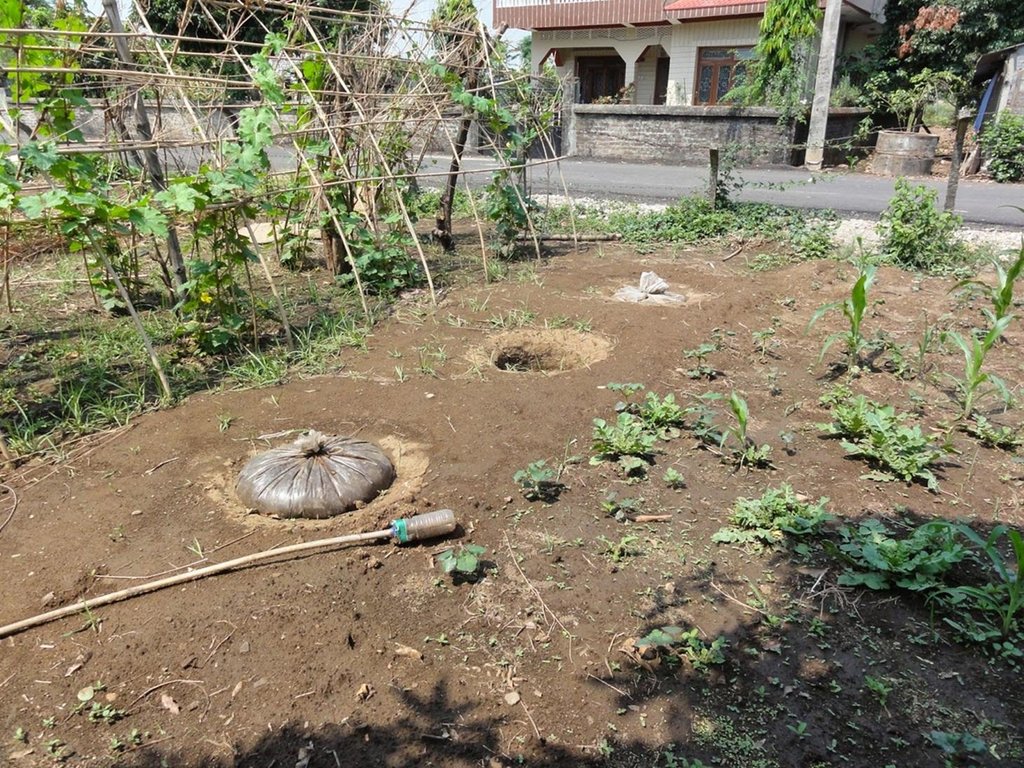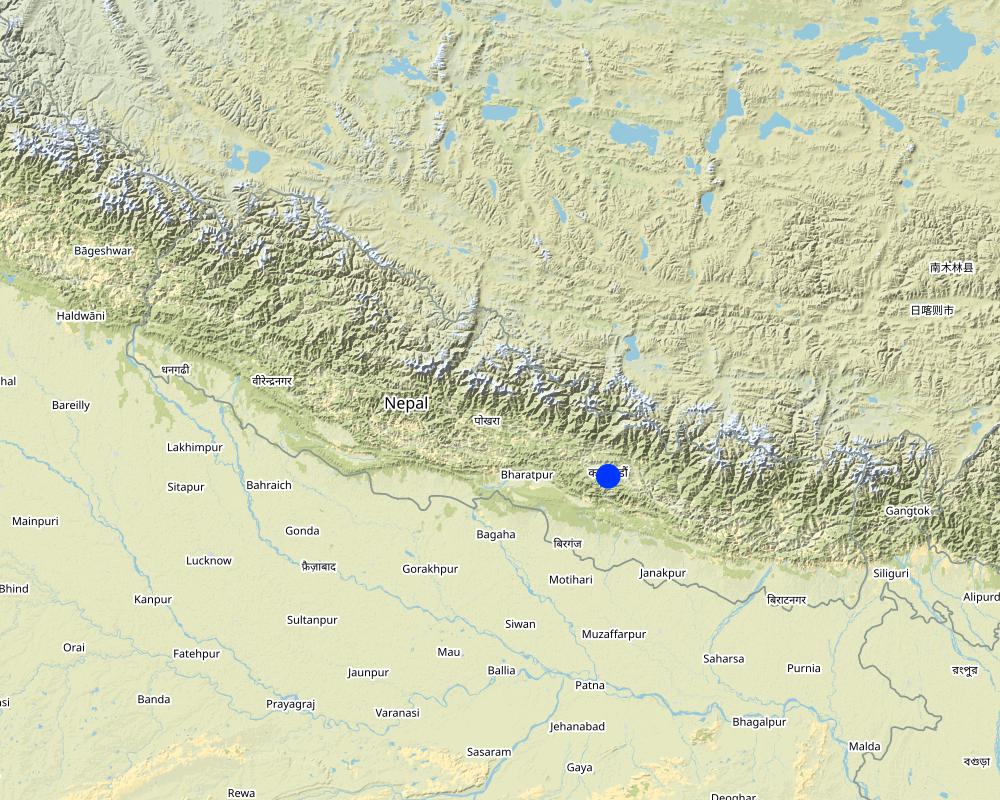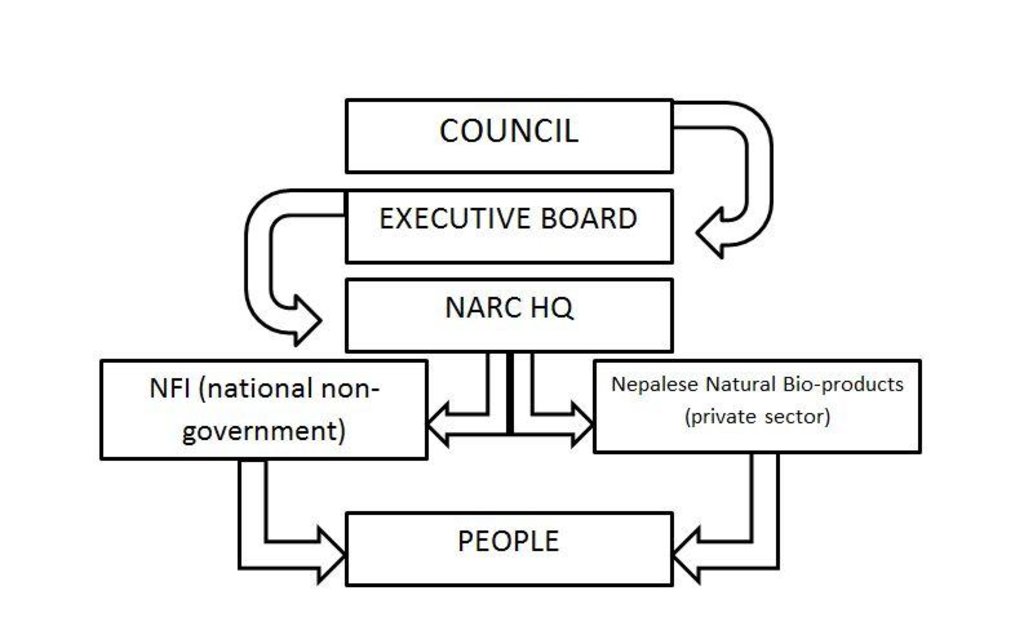Benefits of Jeevatu in crop production and protection [Nepal]
- Creación:
- Actualización:
- Compilador: Sabita Aryal
- Editor: –
- Revisores: Fabian Ottiger, Joana Eichenberger
Jevatu
approaches_2484 - Nepal
Visualizar secciones
Expandir todo Colapsar todos1. Información general
1.2 Detalles de contacto de las personas de referencia e instituciones involucradas en la evaluación y la documentación del Enfoque
Especialista MST:
Sherpa . C Tenzing
Kathmandu University
Kavre, Nepal
Nepal
Especialista MST:
Pradhan Ozal
Kathmandu University
Kavre, Nepal
Nepal
Especialista MST:
Poudyal Bharat Kumar
Central Vegetation seed production center
Nepal
Nombre de la(s) institución(es) que facilitaron la documentación/ evaluación del Enfoque si fuera relevante)
Kathmandu University (KU) - Nepal1.3 Condiciones referidas al uso de datos documentados mediante WOCAT
¿Cuándo se compilaron los datos (en el campo)?
22/09/2011
El compilador y la/s persona(s) de referencia claves aceptan las condiciones acerca del uso de los datos documentados mediante WOCAT :
Sí
2. Descripción del Enfoque MST
2.1 Breve descripción del Enfoque
Beneficial uses of Jeevatu in crop production and protection.
2.2 Descripción detallada del Enfoque MST
Descripción detallada del Enfoque MST:
Aims / objectives: The use of Jeevatu has been and still is solely for agricultural purpose. The main objective of it is to effectively free the environment different poisonous chemicals that are present in the form of pesticides and fertilizers.
It aims to prevent and control pests and diseases, including bacterial, viral and fungal, in vegetables, cereals, flowers and fruit trees, and to improve the growth of the plant, the yield and the quality of the fruits (vitamin content and peel thickness).
It can also be used to keep different fruits and vegetables fresh for a longer period of time.
Jeevatu further helps by promoting the proper management of the waste materials as the key ingredient in the process of producing Jeevatu is different organic wastes.
It provides an advantage to the farmers by an economic point of view as well - the cost of Jeevatu is comparatively much less than that of other pesticides and fertilizers.
Methods: A 2 feet wide and 1 foot long pit is dug in a fertile land.
A plastic sheet is placed in the pit
Raw cow dung and water is poured in the pit and made greasy
The 1m25cm plastic sheet is then made air and water tight by tying it up with a jute rope
Every 2-3 days water is added and the mixture is stirred well
The water added amounts up to about 50L.
After 17-25 days , a green colour is seen in the outer surface of the plastic bag and the odor is no longer present, this indicates that the fertilizer (Jeevatu) is now ready to be used.
The plastic bag is then removed and a new plastic sheet is placed to start the production of a new batch of Jeevatu
1L of the previous made Jeevatu is also included to after the second batch to gain a better yield of Jeevatu.
Role of stakeholders: There are mainly two types
The producers-
They seek profit in terms of money as they plan to produce good amounts of Jeevatu and sell them to the people involved in agriculture or animal husbandry
The people involved in agriculture and animal husbandry-
They seek profit in terms of good yield of crops or animal products. The use of Jeevatu benefits them and keeps them as well as the environment safe.
2.3 Fotos del Enfoque
2.5 País/ región/ lugares donde el Enfoque fue aplicado
País:
Nepal
Región/ Estado/ Provincia:
Nepal
Especifique más el lugar :
Lalitpur
Map
×2.7 Tipo de Enfoque
- proyecto/ basado en un programa
2.8 Propósitos/ objetivos principales del Enfoque
The Approach focused mainly on SLM with other activities (animal husbandry, can also be used in kitchen, toilets, remove bad odors)
To learn how Jeevatu was made
To learn how Jeevatu was made available to the people
To learn how much the people knew about it
To learn the benefits it had in the field of agriculture and animal husbandry
The SLM Approach addressed the following problems: Most people involved in agriculture and animal husbandry are not economically and financially strong. Hence the solution of financial and economic related problems should be given top priority.
2.9 Condiciones que facilitan o impiden la implementación de la/s Tecnología/s aplicadas bajo el Enfoque
disponibilidad/ acceso a recursos y servicios financieros
- impiden
Jeevatu is a local production, even though there is a specific group of people who produce it and distribute in the market as the methods to produce Jeevatu can be considered simple. Due to this reason other companies and people don’t show much interest in investing in it, hence there is low financial support.
Treatment through the SLM Approach: If Jeevatu can be produced in a large scale, it will gradually be recogzied worldwide, hence more financial assistances would be there and the constraint would be eliminated.
marco de trabajo legal (tenencia de tierra, derechos de uso de tierra y agua)
- facilitan
The existing land ownership, land use rights / water rights greatly helped the approach implementation: community ownership meant no hindrance to development.
conocimiento de MST, acceso a apoyo técnico
- impiden
There is lack of technology use
Treatment through the SLM Approach: If by some way technology can be introduced in the making of Jeevatu, the production would be quicker, better and more reliable.
3. Participación y roles de las partes interesadas involucradas
3.1 Partes interesadas involucradas en el Enfoque y sus roles
- usuarios locales de tierras/ comunidades locales
Farmers like Kalpana KC of Emadole, Lubu
Mainly used by farmers to enhance the crop productivity and its protection. Comparatively more economically disadvantaged groups were involved than socially disadvantaged ones. This is due to the cheap price of Jeevatu, i.e. only Rs.100 per bottle. Jeevatu being cheaper than other chemicals enabled the people of different economic groups to have better agricultural products.
- organizaciones comunitarias
People involved in agricultural works and animal husbandry
- especialistas MST/consejeros agrícolas
- ONG
Nepalese Farming Institutes
- sector privado
Nepalese Natural Bioproducts & different nurseries
- gobierno nacional (planificadores, autoridades)
NARC
Si varias partes interesadas estuvieron involucradas, indique la agencia principal:
Dr Bharat Kumar poudyal, Senior vegetable Development officer
3.2 Involucramiento de los usuarios locales de tierras/ comunidades locales en las distintas fases del Enfoque
| Involucramiento de los usuarios locales de tierras/ comunidades locales | Especifique quién se involucró y describa las actividades | |
|---|---|---|
| iniciación/ motivación | ninguno | |
| planificación | ninguno | |
| implementación | ninguno | |
| monitoreo y evaluación | pasivo | self |
| Research | pasivo | About 15 Nepalese scientists of NFI developed this package of beneficial microbes after 25-30 yrs of research with the consultation & experimentation with several farmers and landusers. |
3.3 Flujograma (si estuviera disponible)
Descripción:
The flowchart shows how Jeevatu is made avaiable to the people.
Jeevatu was first made in NARQ HQ, the production was further continued by non governmental organizations such as NFI.
Different private sectors are also involved in funding of Jeevatu production.
The local people or farmers can get access to Jeevatu through these non governmental organizations and private sectors
Autor:
Ozal Pradhan
3.4 La toma de decisiones en la selección de Tecnología(s) MST
Especifique quién decidió la selección de las Tecnología/ Tecnologías a implementarse:
- principalmente por especialistas MST en consulta con usuarios de tierras
Explique:
Around 15 Nepalese scientist of NFI developed this package of beneficial microbes after 25-30 yrs of research with the consultation & experimentation with several farmers.
4. Apoyo técnico, fortalecimiento institucional y gestión del conocimiento
4.1 Construcción de capacidades / capacitación
¿Se proporcionó la capacitación a usuarios de tierras/ otras partes interesadas?
Sí
Especifique quién fue capacitado:
- usuarios de tierras
Forma de capacitación:
- de agricultor a agricultor
- áreas de demostración
- reuniones públicas
Temas avanzados:
The people who received trainings and had gained awareness involved those related to agriculture or animal husbandry.
They were told about the benefits of Jeevatu over the other chemicals and other important facts about how the chemicals cause harm to our bodies and the environment were also mentioned.
4.2 Servicio de asesoría
¿Los usuarios de tierras tienen acceso a un servicio de asesoría?
Sí
Describa/ comentarios:
Advisory service is inadequate to ensure the continuation of land conservation activities; Government and other advisory services are not yet adequate as the message flow, regarding benefits of Jeevatu, is not proper. Only limited people are aware of it and a large number of communities are still using other harmful chemical pesticides and fertilizers.
4.3 Fortalecimiento institucional (desarrollo institucional)
¿Se establecieron o fortalecieron instituciones mediante el Enfoque?
- sí, un poco
Especifique el nivel o los niveles en los que se fortalecieron o establecieron las instituciones:
- local
Especifique el tipo de apoyo:
- construcción de capacidades/ entrenamiento
Proporcione detalles adicionales:
Trainings were provided to the local communities in order to enlighten them about the benefits of the use of Jeevatu and to enable them to provide such awareness to other nearby local communities.
4.4 Monitoreo y evaluación
¿El monitoreo y la evaluación forman parte del Enfoque?
Sí
Comentarios:
area treated aspects were monitored by government through observations
no. of land users involved aspects were monitored by other through observations
There were no changes in the Approach as a result of monitoring and evaluation
4.5 Investigación
¿La investigación formó parte del Enfoque?
Sí
Especifique los temas:
- sociología
Proporcione detalles adicionales e indique quién hizo la investigación:
Research was carried out on-farm
5. Financiamiento y apoyo material externo
5.1 Presupuesto anual para el componente MST del Enfoque
Comentarios (ej. fuentes principales de financiamiento/ donantes principales):
Approach costs were met by the following donors: government (NARC); national non-government (NFI); private sector (Nepalese Natural Bio-products)
5.2 Apoyo financiero/material proporcionado a los usuarios de tierras
¿Los usuarios de tierras recibieron financiamiento/ apoyo material para implementar la Tecnología/ Tecnologías? :
Sí
5.3 Subsidios para insumos específicos (incluyendo mano de obra)
Si la mano de obra de usuarios de tierras fue un insumo sustancial, ¿fue:
- voluntario?
Comentarios:
Also some cash reward
5.4 Crédito
¿Se proporcionó crédito bajo el Enfoque para actividades MST?
No
6. Análisis de impacto y comentarios de conclusión
6.1 Impactos del Enfoque
¿El Enfoque ayudó a los usuarios de tierras a implementar y mantener Tecnologías MST?
- No
- Sí, un poco
- Sí, moderadamente
- Sí, mucho
People, after the approach, acquired different information regarding the harms due to the extensive use of chemical pesticides and fertilizers and also learnt how Jeevatu had a significant advantage over them. It resulted in reduction of the use of those harmful chemicals and hence greatly promoted sustainable land management.
¿El Enfoque empoderó a grupos en desventaja social y económica?
- No
- Sí, un poco
- Sí, moderadamente
- Sí, mucho
Jeevatu is available for just Rs.100 per bottle. This enabled the economically disadvantaged groups to take active part in using Jeevatu, increasing their agriculture yield and hence contribute to sustainable land management.
¿El Enfoque mejoró cuestiones de tenencia de tierra/ derechos de usuarios que obstaculizaron la implementación de la Tecnologías MST?
- No
- Sí, un poco
- Sí, moderadamente
- Sí, mucho
there was no hindrance. The problem is likely to be overcome in the near future. approach creates a framework to use in the future.
Did other land users / projects adopt the Approach?
- No
- Sí, un poco
- Sí, moderadamente
- Sí, mucho
Nearby local communities also adopted Jeevatu as the message was transferred through the local people.
Did the Approach lead to improved livelihoods / human well-being?
- No
- Sí, un poco
- Sí, moderadamente
- Sí, mucho
The production of Jeevatu helped in the proper management of different organic materials The agricultural yield was greatly increased The amount of deterioration of land was significantly reduced
Did the Approach help to alleviate poverty?
- No
- Sí, un poco
- Sí, moderadamente
- Sí, mucho
Jeevatu was affordable by people of economic status; this resulted in increase in their crop yield and hence alleviated poverty to a certain level
6.2 Motivación principal del usuario de la tierra para implementar MST
- producción incrementada
to improve agriculture and animal husbandry by the use of Jeevatu
- incremento de la renta(bilidad), proporción mejorada de costo-beneficio
increase production helps in increasing profit.
- carga de trabajo reducida
helps to reduce large workload.
- well-being and livelihoods improvement
by increasing profits, it helps to improve the livelihood of farmers.
6.4 Fortalezas/ ventajas del Enfoque
| Fuerzas/ ventajas/ oportunidades desde la perspectiva del usuario de la tierra |
|---|
| It has inceased the net profit. (How to sustain/ enhance this strength: If the price can be further lowered, then it can be more efficient.) |
| Fuerzas/ ventajas/ oportunidades desde la perspectiva del compilador o de otra persona de referencia clave |
|---|
|
1) helps to preserve crop production as well as its protection. 2) Helps in composting, treating plant diseases. 3) Jeevatu also helps in waste management. 4) It helps to reduce the filthy smells of boars, dung and other animals. 5) Jeevatu helps in treating different plants related diseases. (How to sustain/ enhance this strength: Jeevatu is a local productio.So,if it introduced globally, then it can be commercialized and many people can be benefitted by its result. By its proper use as instructed by the experts.) |
6.5 Debilidades/ desventajas del Enfoque y formas de sobreponerse a ellos
| Debilidades/ desventajas/ riesgos desde la perspectiva del compilador o de otra persona de referencia clave | ¿Cómo sobreponerse a ellas? |
|---|---|
| Approach was based on small communities which made the information flow very limited | such awareness projects should be developed at a large scale basis to spread the message effectively |
7. Referencias y vínculos
7.1 Métodos/ fuentes de información
- visitas de campo, encuestas de campo
- entrevistas con usuarios de tierras
Vínculos y módulos
Expandir todo Colapsar todosVínculos
No hay vínculos
Módulos
No se hallaron módulos


